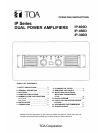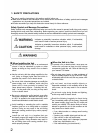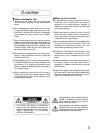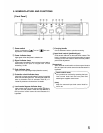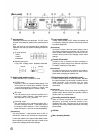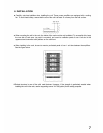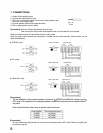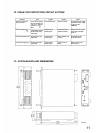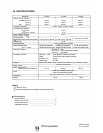
2. GENERAL DESCRIPTION
TOA's IP series dual power amplifiers feature high durability, high quality sound and high output power (IP-
300D: 300 W, IP-450D: 450 W, IP-600D: 600 W - when a 4 load connected). Input/output levels and other
functions can be remotely controlled from external equipment. (An interface unit is required. For details,
contact your TOA dealer.) The amplifier is ideal for use in store sound systems, permanently-installed sound
systems, and other sound systems.
3. FEATURES
Small in size (2-rack unit size) and light in weight.
Variable forced-air cooling system changes the speed of a fan as the heat sink temperature varies, keeping
fan operation noise low.
The input is an electrically-balanced input, which can be converted into a transformer-balanced input using
an optional input transformer.
Three different output modes are made available for selection: Stereo, BTL and parallel outputs. In parallel
mode, the input level of each channel can be set independently.
An internal limiter limits the current during overload, and a protection circuit disconnects the output during an
output short circuit by detecting the levels of both voltage and current. The protection circuit also
disconnects the output during an abnormal temperature rise.
Large output screw terminals (10 mm in width) allow connection of solderless terminals with diameter of 9.5
mm. Because two of each of positive (+) and negative (-) terminals are provided, even the four-core
speaker cables can be connected.
Control I/O terminal. Input and output levels can be remotely controlled or monitored from external
equipment. (An interface unit is required. For details, contact your TOA dealer.)
Detachable carrying handles even after the unit is installed in a rack.
A push-lock level control and its cover prevent accidental setting changes after installation.
An AC inlet simplifies the system maintenance after installation.
4. HANDLING PRECAUTIONS
Line Source: 120 VAC ± 10%, 60 Hz
Never connect the AC power cord to any other line voltage than that specifically designated.
To avoid oscillation, keep the input cable away from the output cable. Particular care must be exercised
when mounting the unit in an equipment rack.
In some installations, a ground loop is formed and such noise as hum may be generated. In such cases, cut
the loop by removing a shorting metal piece attached to the ground terminals on the rear panel. The noise
can be reduced.
These power amplifiers have a filter in their front panel. Clean the filter as frequently as possible. If it
becomes clogged, heat cannot escape from the inside of the unit.
Never connect two amplifier outputs in parallel under any circumstances.
4



